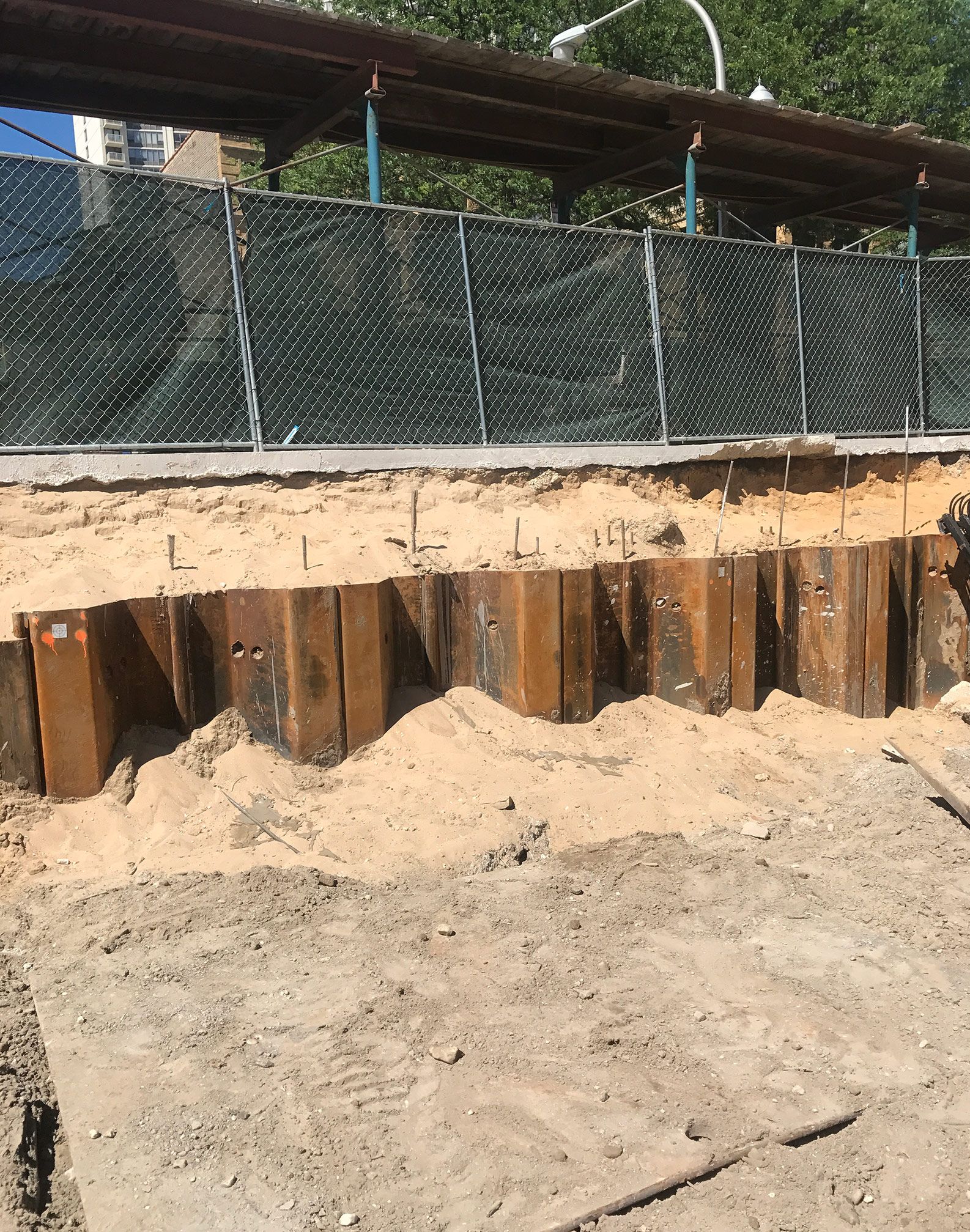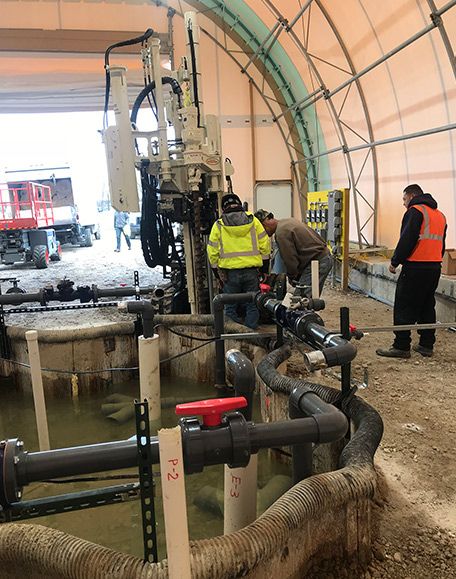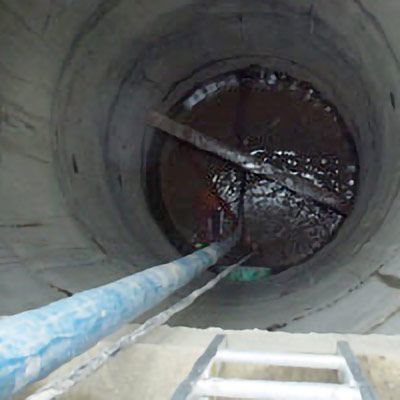Site Redevelopment

Sheet Pile Joint Sealing
Interlocking joint sealing is often performed to inhibit water and soil migration between the sheet joints to minimize de-watering and decompression of soils beneath adjacent buildings and infrastructure.
Frequently, municipalities and developers require that interlocking sheet joints be sealed to inhibit soil loss and water migration between the joints. If allowed to migrate between sheet joints, adjacent soils can decompress causing structures and infrastructure to settle. Shoreline soil retention and contaminant containment are other applications/uses for joint sealing.
Contaminant Migration
When present, contaminants can migrate rapidly from a site of origin to other adjacent non-contaminated properties via water pathways. Pathways which most often allow rapid contaminant migration are utility trench bedding materials and granular seams in the soil.
Permeation and slurry grouting are two methods used to inhibit contaminant migration through soil seams and utility bedding materials quickly and efficiently. Cutoff walls and encapsulation of contaminants are also effective ways to isolate and inhibit migration.


Pipeline Abandonment
The permanent filling of service pipelines with Redi-Mix grouts is an easy, cost-effective means of site redevelopment to avoid excavation and disposal costs.
Rarely removed for other than environmental concerns or future development plans, filling manholes and pipelines is a cost-effective solution. Frequently, smaller-diameter lines beneath existing structures or sites are filled with cementitious grouts or foams. Larger pipelines are typically filled using Redi-Mix for high volume applications.
Soil Retention
Conventional methods for soil retention include steel sheeting, wood lagging, and benching; however, in those instances where below-grade utilities, vibration, or limited access issues inhibit conventional methods, soil grouting is a useful means to immobilize and strengthen soils.
Weak, cohesive soils and granular soils can be strengthened by selecting appropriate grouting methods to densify and strengthen soils. Increasing a soil’s density using compaction or slurry grouting techniques increases a soil’s cohesiveness, therefore minimizing slough. Granular soils can be immobilized using permeation grouting products to increase density and cohesiveness.
Low Strength Soils
Compaction grouting is a method for densifying weak soils and urban fill to increase their load-bearing capacities primarily for new developments. Low-strength soils are problematic for developers when encountered for new construction or site re-development. Shallow depth weak soils are easily removed and replaced with clean compactable fill. However, when weak soils extend well below load-bearing components of a new structure, replacement, piering, and/or caissons can become cost-prohibitive. Soil densification is often an option to increase soil density and load-bearing capacity. Compaction grouting is the most common method to increase soil density and is typically performed using low-slump Cementous or high-density rapid PEFs (polyurethane expanding foams).

